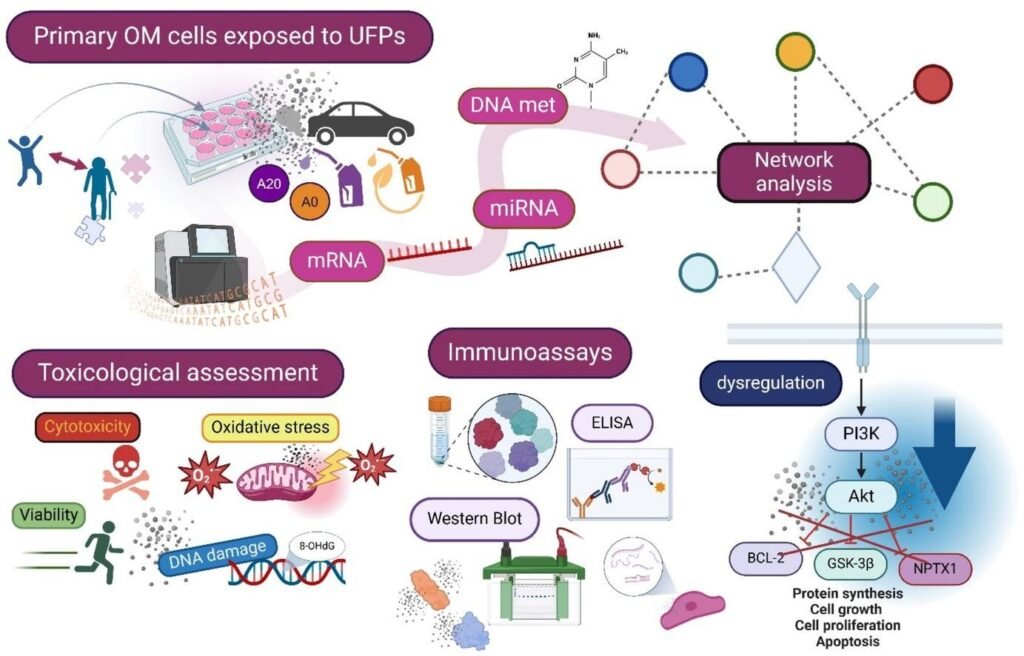Air pollution is a significant environmental concern that affects not only our respiratory system but also our genes. A recent study conducted by the University of Eastern Finland has shed light on how exposure to ultrafine particles (UFPs) from traffic can alter gene transcription through epigenetic mechanisms, ultimately impacting cellular survival. This groundbreaking research, published in Environment International, is the first of its kind to combine RNA sequencing, microRNA sequencing, and DNA methylation analysis to understand the gene regulatory mechanisms induced by UFPs in human cells.
UFPs are the smallest contributors to air pollution, primarily originating from traffic emissions. These particles have been linked to various health issues, including neurological disorders like Alzheimer’s disease (AD). The study focused on the olfactory mucosa, a region in the nasal cavity directly exposed to the environment and in contact with the brain. Given that UFPs tend to deposit in the nasal area, understanding their effects on olfactory cells is crucial, especially considering the early onset of olfactory dysfunction in AD patients.
The research team, led by Professor Katja Kanninen, developed a human-based in-vitro model of the olfactory mucosa using cells collected from voluntary donors. Doctoral Researcher Laura Mussalo emphasized the importance of unraveling the molecular mechanisms underlying the link between air pollution and AD. By investigating the PI3K/AKT signaling pathway, known for its role in cellular growth and survival, the study revealed how UFPs disrupt this pathway, potentially leading to mitochondrial dysfunction and cell death.
Interestingly, the study found that while many genes related to cell cycle and apoptosis were affected by UFP exposure, olfactory cells displayed adaptation mechanisms to combat these environmental insults. However, cells derived from individuals with AD showed increased vulnerability to the adverse effects of UFP exposure, suggesting a potential link between air pollution and neurodegenerative diseases.
This research provides crucial insights into the intricate relationship between UFP exposure, gene regulation, and cellular survival in olfactory cells. By uncovering the epigenetic mechanisms at play, the study paves the way for future investigations into how air pollution contributes to neurodegenerative disorders like Alzheimer’s disease. The findings underscore the pressing need for effective pollution control measures to safeguard both our respiratory health and genetic well-being.


